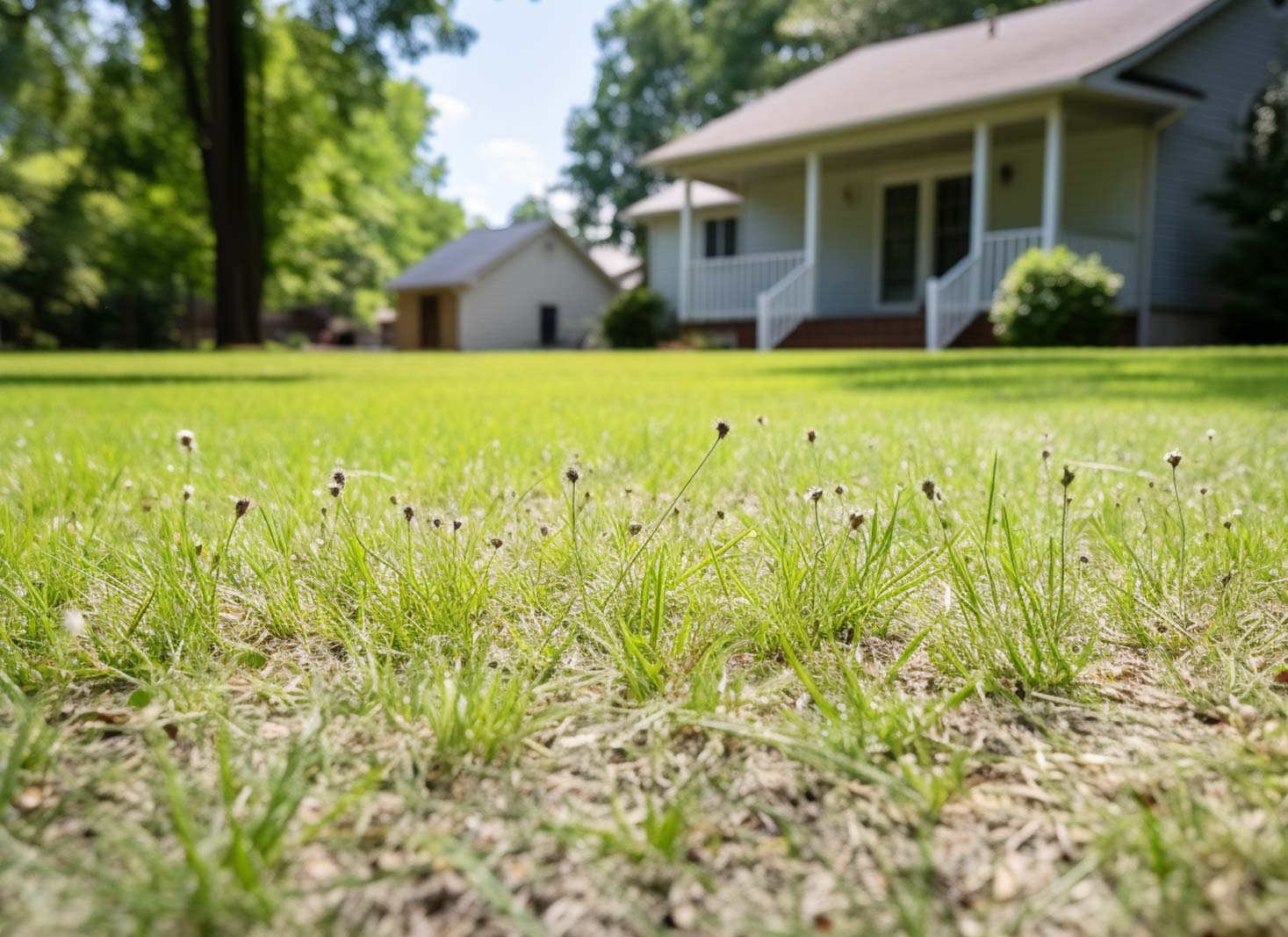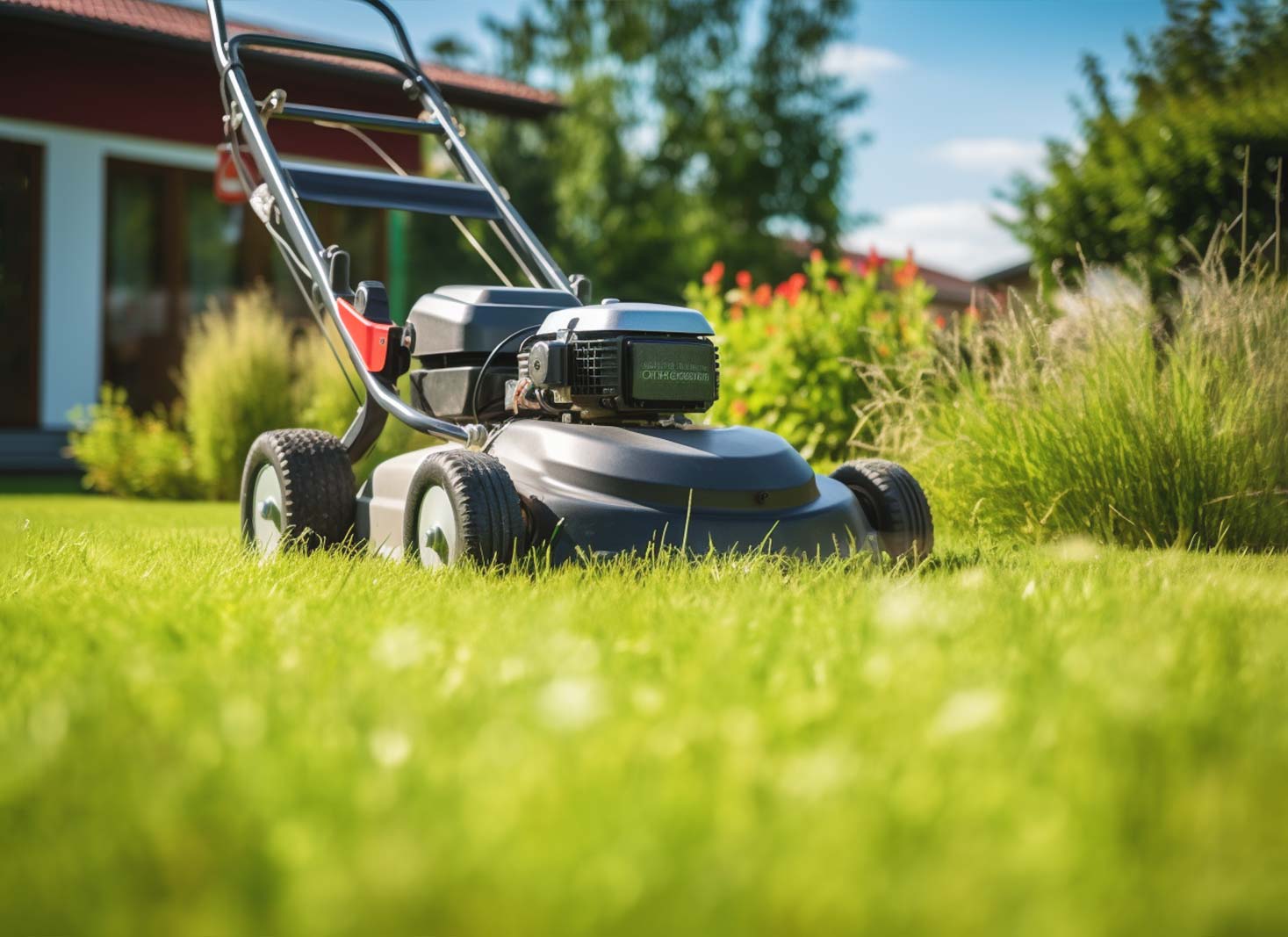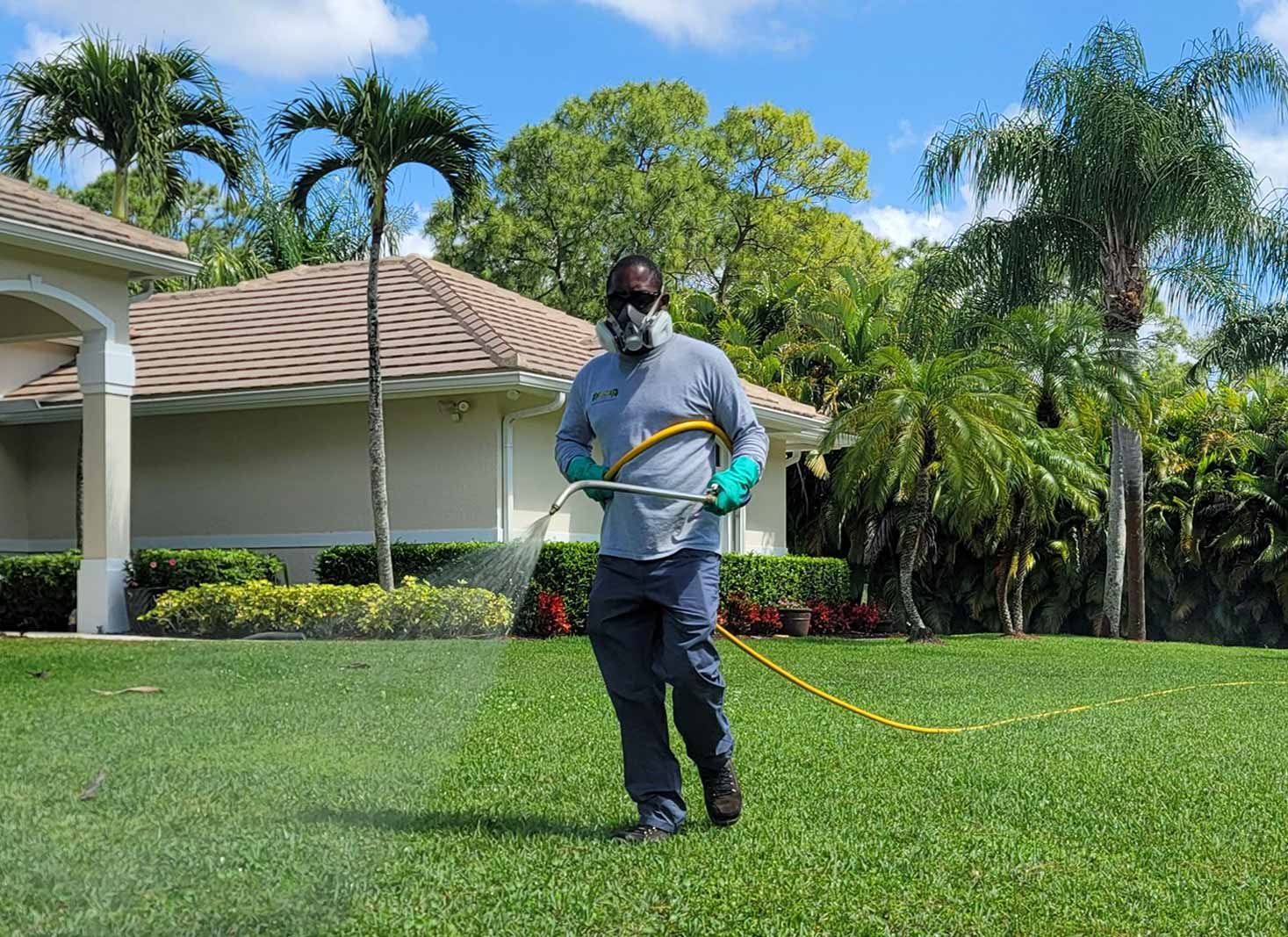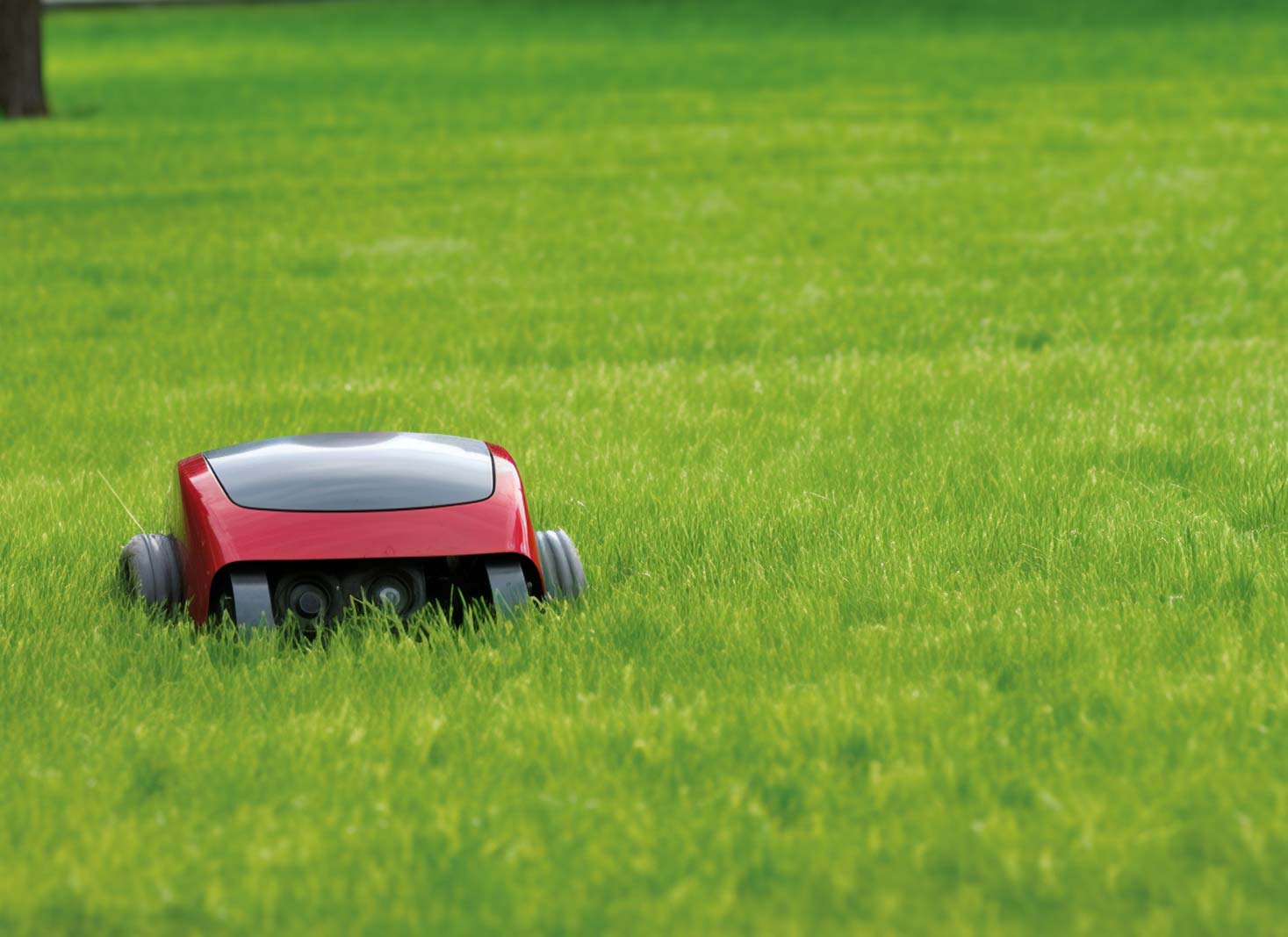The battle against these pesky invaders is an ongoing struggle, and the key to victory lies in understanding how to control them effectively.
Mowing weeds correctly is necessary to prevent weed growth and spread. Precautions such as using a bagger, cleaning the mower regularly, and cutting grass in two passes can help control weed spread when mowing.
Preventing the spread of weeds while mowing, and exploring alternative weed control methods can help you maintain a pristine, weed-free lawn.
What we cover
ToggleThe Truth About Mowing Weeds

Mowing is a crucial part of lawn care, and it can play a significant role in controlling weeds. Mowing your lawn correctly is essential to keep weeds away.
If done incorrectly, it can actually help spread weeds throughout the lawn. Mowing helps control weeds by eliminating their food source (sunlight) and preventing weed seeds from germinating.
On the flip side, mowing weeds that have already begun to produce seeds can spread them across your lawn, leading to further growth. To make matters more complex, different types of weeds respond differently to mowing.
Some weeds, such as clover and crabgrass, grow close to the ground and are not easily removed by mower blades.
How Mowing Can Spread Weeds
Mowing can inadvertently spread weeds in two ways: by lodging weed seeds in the mower blades and by dispersing them through grass clippings.
When a lawn mower cuts through a patch of weeds that have produced seeds, these seeds can stick to the mower blades and be transported to other parts of the lawn.
Furthermore, if the grass clippings containing weed seeds are left behind, they can germinate and establish themselves in new areas. To prevent the spread of weeds while mowing, it’s important to take certain precautions.
One effective method is to use an exhaust-catcher bag, which can contain clippings and prevent their dispersal across the lawn.
Additionally, cleaning the mower between mows can help remove any weed seeds that may have been transferred to the mower blades, thus impeding their transmission to other parts of the lawn.
How Mowing Can Control Weeds
While mowing can spread weeds, it can also be an effective method of weed control. Mowing helps control weeds by reducing seed production, exhausting resources, and encouraging grass to grow thicker.
By cutting off the upper part of the weed, mowing prevents it from producing seeds and spreading further.
Moreover, consistent mowing can manage up to 60% of the weed population in your lawn. To make the most of mowing’s weed-controlling potential, it’s crucial to follow proper mowing techniques.
These include selecting the right height for cutting, mowing in multiple directions, not mowing more than one-third of the grass blade height, mowing frequently, and maintaining sharp mower blades.
By adhering to these practices, you can effectively limit the spread of weeds and promote a healthy, weed-free lawn.
Tips for Preventing Weed Spread When Mowing

In addition to proper mowing techniques, there are a few more tips you can implement to prevent your lawn mower from spreading weeds.
These include attaching a bagger to the mower to collect seeds and clippings when mowing flowering weeds, ensuring the mower is cleaned between mows, and cutting the grass in two goes.
By following these tips, you can further minimize the spread of weeds and maintain a pristine lawn.
Proper Mowing Techniques
Selecting the appropriate cutting height is essential for preventing weed spread and maintaining a healthy lawn.
The recommended height for mowing varies depending on the grass type and season, but it’s generally advised to cut at the higher end of the desired range.
Mowing in multiple directions is also important, as it ensures even coverage across the entire lawn, preventing the formation of bare spots where weeds can take hold.
In addition to height and direction, it’s essential to avoid cutting more than one-third of the grass blade height at a time.
This practice helps prevent stress on the grass, which can weaken it and make it more susceptible to weed invasion.
Cleaning Your Lawn Mower
Cleaning your lawn mower after mowing a yard with weeds is crucial to prevent the spread of weed seeds. Cut the grass in two goes, allowing the mower to efficiently capture the clippings and seeds.
After mowing, it’s essential to clean the mower’s blades and housing to remove any debris, hardened grass, and weed seeds. You can use a hose to spray the blade and housing, or a stiff-bristled brush to clean them.
Additionally, it’s essential to maintain the mower’s blades by sharpening them at least twice per season. Sharp blades provide a clean cut, reducing the chances of grass damage and weed invasion.
Identifying Common Lawn Weeds
Cool-Season Weeds
Cool-season weeds germinate in the autumn and sprout early in the spring, making them a common nuisance during these times of the year.
Examples of cool-season weeds include thistle, carpetweed, common chickweed, corn speedwell, crabgrass, dandelion, and henbit. Identifying these weeds involves examining their leaf shape, color, texture, and shallow root system.
To control cool-season weeds, you can utilize a combination of mowing, hand-pulling, and herbicides.
Warm-Season Weeds
Warm-season weeds, on the other hand, thrive during the summer months. Common warm-season weeds include Bermuda grass, crabgrass, foxtail, goosegrass, purslane, and prostrate spurge.
To identify these weeds, look for those that are green and actively growing during the summer.
The most effective method for controlling warm-season weeds is the use of a pre-emergent herbicide, which inhibits germination and growth.
Post-emergent herbicides can also be used to eliminate existing weeds.
Alternative Weed Control Methods

Chemical Weed Killers
Chemical weed killers comprise various types of herbicides, including contact, systemic, residual, selective, and non-selective ones. Examples of chemicals used to control weeds include 2,4-DB, EPTC, bromoxynil, and paraquat.
The most potent weed-killer chemical available for purchase is glyphosate.
When using chemical weed killers, it’s important to follow the manufacturer’s instructions carefully and apply them at the appropriate times and rates.
Manual Weed Removal
Manual weed removal methods include hand-pulling weeds, using hand tools such as a hoe or cultivator, and uprooting weeds close to the ground.
Hand-pulling involves grasping the weed near the base of the plant and pulling it out of the ground, ensuring that the entire root system is removed to prevent regrowth.
Hand tools like hoes and cultivators can be used to extract weeds from the ground.
Uprooting weeds manually requires digging around the weed with a shovel or other tool and pulling it out of the ground, again ensuring that the entire root system is removed.
While manual weed removal can be time-consuming, it is an effective method for controlling weeds without the use of chemicals.
Maintaining a Healthy Lawn to Combat Weeds
A crucial aspect of weed control is maintaining a healthy lawn, as this makes it more difficult for weeds to take hold. By ensuring healthy soil conditions and regularly fertilizing your lawn, you can reduce the chances of weed growth.
Proper watering and drainage are also essential components of a healthy lawn, as they help create an environment where grass can thrive and weeds struggle to survive.
Fertilization and Soil Health
Fertilization plays a key role in weed control by promoting a healthy, resilient lawn that is more resistant to weed invasion.
Fertilizing your lawn on a regular basis can help build healthier and stronger grass. This in turn helps to reduce the number of weeds. It also ensures that the soil has the necessary nutrients for healthy turf growth.
Maintaining soil health is equally important and can be achieved through various methods, such as regular fertilization, aeration of the lawn, ensuring adequate drainage, and incorporating organic material like compost or mulch.
Proper Watering and Drainage
Proper watering and drainage are vital for maintaining a healthy lawn that can resist weeds.
It’s essential to water the lawn deeply and infrequently, around three to four times per week, with each watering amounting to between one-quarter and one-half inch.
This promotes deeper root growth and helps sustain a healthy lawn.
Addressing drainage issues in your yard is also important to ensure the soil is neither too wet nor too dry.
Techniques such as amending the soil with organic compost, core aeration, and dethatching can help improve drainage and create a more favorable environment for grass growth.
The Role of Robotic Lawn Mowers in Weed Control

Robot mowers offer a modern solution for maintaining a weed-free lawn. These innovative machines provide consistent mowing, which is essential for effective weed control.
By consistently maintaining grass at an even height and eliminating the uppermost part of the weed, robotic lawnmowers can successfully prevent weeds from seeding and spreading.
In addition to their weed-controlling capabilities, robotic lawnmowers are more eco-friendly and quieter than traditional mowers. They can also foster a healthy lawn by promoting regular mowing schedules, which is crucial for weed control.
FAQ's
Mowing weeds can be an effective way to control their spread. Cutting them down damages the plant and stops them from flowering, as well as exposing more of the plant closer to its roots for treatment.
Ultimately, mowing your weeds is an easy way to protect your lawn from further infestation.
Frequent mowing can effectively control weeds when done correctly. Consistently cutting grass to a height of 3 inches or less will prevent the sunlight and nutrients needed by weeds to germinate and grow, thus helping to reduce weed populations.
Therefore, yes, frequent mowing can kill weeds.
Overall, it is best to pull weeds before mowing. Taking care of any weed seed stems prior to mowing will help prevent them from taking over your lawn and can also reduce the risk of spreading weed seeds as you mow.
Addressing perennial weeds as soon as they sprout is key for effective weed prevention.
To ensure the most effective weed control, it is recommended that you mow your lawn weekly. This will give you the best chance of controlling and reducing 60% of weeds in your lawn.
Through regular mowing, you can eliminate much of the problem without the need for chemical applications.
Yes, mowing weeds can be an effective way of controlling them in your lawn. It is important to use a clippings bag on your mower and ensure that the weeds are still young and haven’t had time to spread their seeds.
This will help weaken and prevent the future growth of these unwanted plants.
